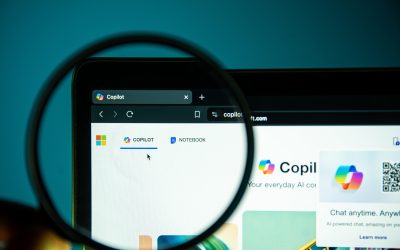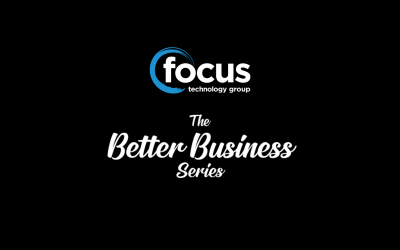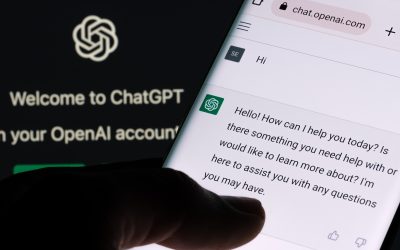The Internet of Things – what’s the future of IoT?

As discussed in our past article on the Internet of Things, IoT is a network that is comprised of physical objects that are capable of gathering and sharing electronic information. IoT includes a wide variety of “smart” devices, from industrial machines which transmit data about production processes to sensors that track information about the human body. It is a concept that not only has the potential to impact how we work but also how we live.

Image source: jaxenter.com
Now that we know what IoT means and what we can do with it in our day to day lives, we thought you might like to learn where it is headed in the future, how it will affect us in both our personal and professional lives, and what you need to know if you want to move further into the world of the Internet of Things.
With already more connected mobile devices and smartphones than the total global population, the Internet of Things is a growing network of connected devices and things that is not going to stop. By 2020, the number of active wireless connected devices will double, connecting more than five billion people and 50 billion things. (The Self Employed)
“The consumer’s adoption of fitness bands and connected household appliances might generate more media buzz, the potential for business usage is much greater. Research from the McKinsey Global Institute suggests that the operational efficiencies and greater market reach IoT affords will create substantial value in many industries.” (McKinsey)
Gartner Research Director, Chet Geschickter, says 2016 ‘will be a very big year’ for IoT adoption. (ChannelLife)
“The IoT demands an extensive range of new technologies and skills that many organizations have yet to master,” said Nick Jones, vice president and distinguished analyst at Gartner. “A recurring theme in the IoT space is the immaturity of technologies and services and of the vendors providing them. Architecting for this immaturity and managing the risk it creates will be a key challenge for organisations exploiting the IoT. In many technology areas, lack of skills will also pose significant challenges.” (Gartner)
IoT technologies and principles will have an extensive influence on businesses, affecting areas such as business strategy, risk management, plus a wide range of technical areas.
Gartner’s top 10 IoT technologies for 2017 and 2018:
- IoT Security – Gartner predicts that hardware and software advances will make IoT security a fast-evolving area through 2021 and the skills shortage today will only accelerate. As many security problems are the result of poor design, implementation and lack of training, expect to see market leaders adopting IoT investing heavily in these areas.
- IoT Analytics – IoT analytics require entirely new algorithms, architectures, data structures and approaches to machine learning if organisations are going to get the full value of the data captured, and knowledge created.
- IoT Device Management – The challenges of enabling technologies that are context, location, and state-aware while at the same time consistent with data and knowledge taxonomies is an area Gartner believes will see significant innovation in the next few years.
- Low-Power, Short-Range IoT Networks – Low-power, short-range networks will dominate wireless IoT connectivity through 2025, far outnumbering connections using wide-area IoT networks.
- Low-Power, Wide-Area Networks – According to Gartner, traditional cellular networks don’t deliver a proper combination of technical features and operational cost for those IoT applications that need wide-area coverage combined with relatively low bandwidth, good battery life, low hardware and operating cost, and high connection density.
- IoT Processors – Gartner predicts that low-end 8-bit microcontrollers will dominate the IoT through 2019 and shipments of 32-bit microcontrollers will overtake the 8-bit devices by 2020.
- IoT Operating Systems – Minimal and small footprint operating systems will gain momentum in IoT through 2020 as traditional large-scale operating systems including Windows and iOS are too complex and resource-intensive for the majority of IoT applications.
- Event Stream Processing – Gartner predicts that some IoT applications will generate extremely high data rates that must be analysed in real time. Systems creating tens of thousands of events per second are common, and millions of events per second can occur in some telecom and telemetry situations. To address such requirements, distributed stream computing platforms (DSCPs) have emerged.
- IoT Platforms – According to Gartner IoT platforms bundle infrastructure components of an IoT system into a single product. The services provided by such platforms fall into three core categories. These include low-level device control and operations such as communications, device monitoring and management, security, and firmware updates; IoT data acquisition, transformation and management; and IoT application development, including event-driven logic, application programming, visualization, analytics and adapters to connect to enterprise systems.
- IoT Standards and Ecosystems – Although ecosystems and standards aren’t precisely technologies, most eventually materialize as application programming interfaces (APIs). Standards and their associated APIs will be essential because IoT devices will need to interoperate and communicate, and many IoT business models will rely on sharing data between multiple devices and organizations.
Resources
- http://channellife.co.nz/story/gartner-2016-will-be-very-big-year-iot-adoption/
- http://www.gartner.com/newsroom/id/3221818
- https://www.theselfemployed.com/infographics/infographic-internet-things-will-generate-jobs-save-money-connect-world/
- http://www.mckinsey.com/business-functions/business-technology/our-insights/an-executives-guide-to-the-internet-of-things






